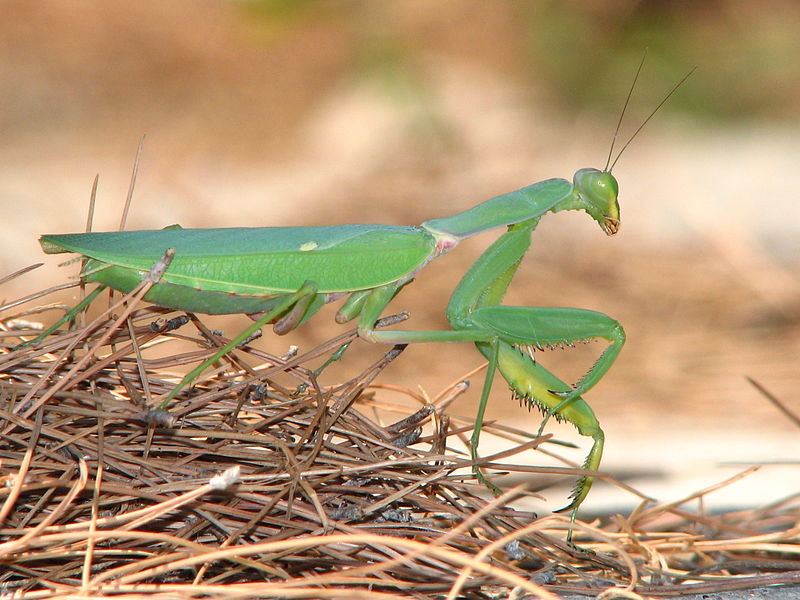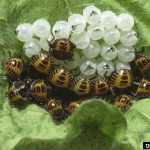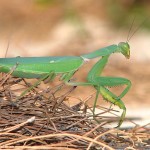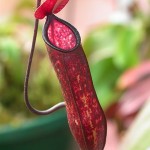
Natural Stink Bug Prevention and Control
Natural Stink Bug Prevention and Control

The war on stink bugs has been waged, and with it comes a slew of weapons. Unfortunately, not all of these weapons used to rid our homes and gardens of stink bugs are environmentally friendly. How can we fight this war without accidentally damaging mother nature at the same time?
Getting rid of stink bugs is a major concern for anyone who has had to deal with these little intruders. The Brown Marmorated Stink Bug comes into our homes through any little space it can find, and looks for a spot to hibernate for the winter. The stink bugs are then lured out of their hiding spots by the warmth of the house, to buzz around our lights and heads, falling into our soup and landing on our toothbrushes.
Keeping theses pests away, and getting rid of stink bugs once they have invaded can be a chore. Preventing the stink bugs from entering your home is the best line of defense. Keeping the home sealed and airtight is the most effective measure. Here are some tips and tricks for keeping stink bugs out of your home.
There are a number of stink bug traps available as well. Some of these are more effective than others, and some are more natural than others. You can read a review of the best available stink bug traps here. Of course, even without using chemicals, the traps are still made of plastic and inevitably will spend eternity in a landfill.
Calling an exterminator is likely to involve chemicals and sprays, many which may be harmful to pets and even children, and also could be hurtful to flowers and vegetable outside the home. There are also sprays available for inside the home, but again, these could involve unwanted chemicals.
So where does that leave us? How can we fight the war on stink bugs without using dangerous chemicals, or store bought, land-fill prone traps?
Natural Stink Bug Prevention is the solution. Fight Nature with Nature!
After all, stink bugs didn’t come from another planet (although it sometimes seems they did!). They are a product of nature, and should be able to be dealt with by using natures own weapons.
Natural Stink Bug Predators
Since the stink bugs are not native to the United States, they do not have a natural predator here. When they first arrived on our soil, stowing away in shipping containers from Asia, their natural predators did not make the trip with them. Fortunately, however, a number of American predators have gotten a taste for the brown marmorated stink bugs, and can be our allies in fighting the war!
 Praying Mantis
Praying Mantis
The natural soldier on the front lines of the battle against the stink bugs is the Praying Mantis. These quick moving, large hunters can easily snack on the slow moving stink bugs, and are happy to do it. Any stink bug coming in contact with a Praying Mantis is going to lose that battle, and the Praying Mantis has a very healthy appetite!
OK, well how does that help you get rid of stink bugs? True, these effective hunters are not always that plentiful. It will definitely help to tip nature’s scales a bit in your own favor. All’s fair in war, right?
There are actually Praying Mantis eggs readily available, and extremely affordable, which can be hatched and released in your garden. They hatch in just a few weeks, and go through many different life cycles on their way to adulthood, eating insects all the while.
Once the Praying Mantis army starts feeding outside your house, the stink bug population is sure to suffer a major loss.
Praying Mantis 2 Egg Cases 100 – 400 Babies
Stink Bug Eating Plants
Suddenly Seymore is trying to rid his home of stink bugs, and he doesn’t need a giant talking plant to do it. Sure, Audrey 2 could probably take care of the problem in one giant gulp, but there are smaller, less murderous options we can all safely use in our homes. (Sorry to anyone that does not get the Little Shop of Horrors reference!)
Jokes aside, there are a number of bug-eating plants available that will help fight the war against stink bugs. These plants are fun to have, easy to care for, and some are very beautiful as well.
Pitcher Plants
Pitcher Plants feature a deep well filled with water into which bugs go in, but don’t come out! Bugs are attracted into the cavity by lures, scents and colors. The slick rim of the pitcher plant causes the bugs to fall into the cavity, and the downward facing hairs lining the inside wall of the plant ensure the bugs will not climb out! Pitcher plants are very tough and hardy, and easily can be grown indoors.
Carnivorous Purple Pitcher Plant – Sarracenia purpurea – 3″ Pot
Venus Fly Trap
The Venus Fly Trap lures bugs into it’s teeth by emitting a sweet smell that they can’t resist.
Tiny hairs on the leaves act as triggers – when a bug sets one off, the plant closes the leaves of the trap and ensnares the bug, eventually devouring it!
Venus Fly Traps are very common, and easily found at florist and garden stores.
Yard and Garden
Eliminating the stink bugs outside of your home will cut down on the number of stink bugs inside your home. There are many ways to do this safely and naturally.
Eliminate yard waste and debris along the perimeter of your house. Cut back weeds and trim shrubs around the house.
In the Garden
Stink bugs can be a huge nuisance to a vegetable garden, destroying crops and reducing your hard work to a pile of bugs. You can fight back without using chemical sprays that may harm your crops and taint your vegetables.
1. Control the weeds. Stink bugs love dense areas of weeds. Keep your garden well maintained to eliminate breeding grounds for stink bugs.
2. Hunt down and remove stink bug eggs before they hatch! Egg clusters form on the underside of leaves. Examine the plants and remove the clusters. Simply squash the clusters to prevent them from hatching.
3. Plant trap crops. Trap crops are plants that are added to a garden to attract the stink bugs, and keep them away from the rest of the plants. Stink bugs are highly attracted to mustard greens. Plant a row of the greens near the edge of the garden. When they are filled with bugs, tightly wrap a trash bag around the entire plant. The stink bugs should bake in the heat of the sun in a few days.
Natural Stink Bug Traps

Natural Solutions to stink bugs are real!
In the War on Stink Bugs, there is no need to compromise your health and beliefs. By utilizing a proper defense plan and the weapons that nature has provided us, we can fight the stink bugs naturally!





Here’s a link to carnivorous plants or insect-eating plants by zone. https://www.growcarnivorousplants.com/Articles.asp?ID=273
NORTH AMERICAN CARNIVOROUS PLANTS
ZONE OF NATURAL HABITAT
Cobra Plant (Darlingtonia californica): 8
Venus Flytrap (Dionaea muscipula): 8
Northern Dewthread (Drosera filiformis filiformis): 4-8
Pale Pitcher (Sarracenia alata): 8
Yellow Trumpet (Sarracenia flava): 7-8
White Top Pitcher (Sarracenia leucophylla): 8
Hooded Pitcher (Sarracenia minor): 8-9
Green Pitcher (Sarracenia oreophila):7
Parrot Pitcher (Sarracenia psittacina): 8
Northern Purple Pitcher (Sarracenia purpurea ssp. purpurea): 2-6
Purple Pitcher (Sarracenia purpurea ssp. venosa): 7-8
Burke Purple Pitcher (Sarracenia rosea): 8
Sweet Pitcher (Sarracenia rubra): 7-8
venus fly traps shouldn’t eat stink bugs it kills the mouth
There are conflicting reports on stink bugs and Venus Fly Traps. The best solution is to not feed the stink bugs to your VFT. The plant will eat what it can – is it wants to eat the stink bugs, it will!